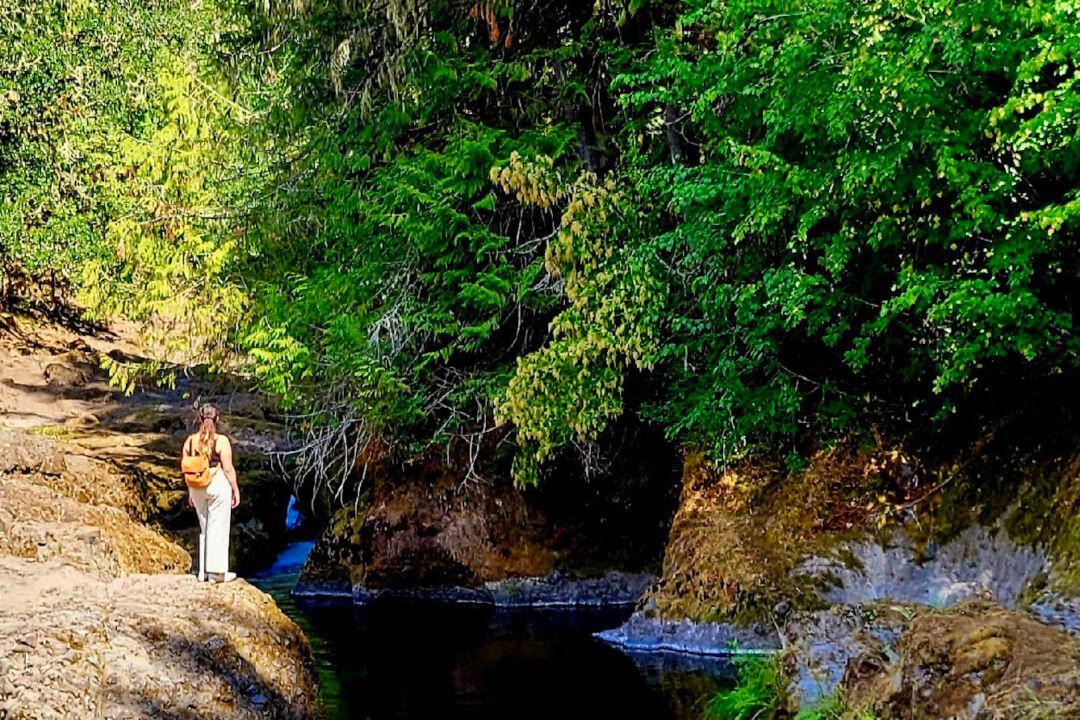A self-professed “blue-collar town,” Kalispell, Montana, doesn’t have the ski-town Old West vibe of nearby Whitefish.
Its main street, with its sturdy brick buildings, reflects an agricultural and ranching center that came of age during the early 20th century. It’s a town where Wilderness Outdoors offers 10,000 gallons of 10-gallon hats and a mile-long shelf of boots, along with any tack you might need.
Tucked away, almost out of sight, is a standing display stacked high with T-shirts branded with logos and mottos from the mega-successful Montana-based TV series, “Yellowstone.”
“We‘d just as soon not have ’em at all,” the hard-as-hickory saleslady in the snap-western shirt and well-worn jeans tells me. “But the tourists want it. One woman asked if I had the exact same hat that Rip (”Yellowstone’s gruff enforcer and chief wrangler) wears. I told her I didn’t know. I don’t watch the show.”
A walk down Main Street tells you a lot about Kalispell—where it comes from and where it’s going. You’ve got the Kalispell Grand Hotel that may actually have been grand when it was built 100 years ago next to the flashy marquee of The Ritz “Luxury Lounge,” where designer cocktails are the order of the day.

Its opposite number is Moose’s (about five blocks away), where the taps pour Bud and Bud Lite, the TVs over the bar glow with football games and, to be honest, tourists can feel distinctly out of place.
“Who’s winning?” I congenially asked a couple of guys at the bar.
“Winning what?” one grumbled.
I got the message and moseyed out the door past a moth-eaten deer head.
The issue that the residents of Kalispell are facing is what price progress? What is lost when the town’s former commercial storefronts have given way to the Blue Samurai Sushi Bar and Grill and the MontaVino Winery tasting room? Do real cowboys drink pinot noir and eat uni?
Some entrepreneurial enterprises such as John Costa’s Mercantile Steak are thriving. Located in the historic KM Building, where for more than a century Kalispell Mercantile was the Flathead Valley’s premier retailer of quality goods and merchandise, it was known simply by its nickname—“the Merc.”
Today the dining area and bar have been skillfully renovated to reflect its heritage. Diners eat below the store’s original copper-tined ceiling amid the glow of Tiffany-style lamps and stained-glass. The menu is all about beef and features fresh-made Yorkshire puddings the size of basketballs.
On the other hand, when Costa (a California transplant) decided to open a more cuisine-driven establishment, Alchemy, with an expertly curated wine list and tapas-style dishes, the locals shied away.
“People here aren’t comfortable ordering food and wines they can’t pronounce,” Costa admitted.
A few weeks later, Alchemy closed.
Downtown Kalispell is surrounded by miles and miles of could-be-anywhere urban landscape dotted with brand-name hotels, fast-food stops and big-box stores that act like magnets for the surrounding communities. People may live and work in rustic White Fish, but they shop in Kalispell.
While “Yellowstone” promotes a cattle-baron vision of Montana—equal parts Wrangler jeans, Stetson hats and Ralph Lauren chic—Kalispell’s Conrad Mansion Museum paints a very different picture of success in the Wild West circa 1895. And like those notorious Duttons, succeeding generations of Conrads kept a close hold on their three-story Norman-style home and all its original heirlooms. Painstakingly preserved, it is now listed on the National Register of Historic Places.

The wintery day I toured the house, I was lucky enough to have Cindy Connor, chief docent, as my guide. Her knowledge is extensive and delivered with a combination of humorous (at times saucy) anecdotes and a taskmaster’s attention to detail.
The Conrads’ story begins, she explained, in 1892, when an adventurous freight merchant and trader named Charles Conrad made his way (along with his wife, Lettie) to the Flat Head Valley of Montana, where he founded the town of Kalispell (which in the Salish language means “prairie above the lake”). Conrad celebrated his success in 1895 with the completion of the hand-crafted mansion on Woodland Avenue designed by Spokane architect Kirtland Cutter.
Unlike so many historic homes that are forced to rely on equivalents, the Conrad Mansion and its contents (from chamber pots to glittery ball gowns) are all the originals. They remained in the family until 1974, when Alicia Conrad McCutcheon Campbell donated the house and its treasure-trove of contents to the city of Kalispell. After years of restoration and curatorial care, the Conrad Mansion is described as “one of the most outstanding examples of luxurious living and period architecture in the Northwest.”
From the Great Hall, with its massive stone fireplace, stained-glass windows and hand-carved golden oak woodwork, to the perfectly restored kitchen and elegant bedrooms, Connor explained, “This is a house of endless stories.”
When I noticed a photograph of a beautiful young woman in a jaunty western hat, I asked who she was.

“That’s Charles Conrad’s daughter-in-law, Kokoa (pronounced like Coco) Baldwin,” I was informed. “Kokoa was the first white child born on the Blackfeet Reservation. Her name translates to ”little white girl” in the Blackfeet language.
Kokoa was beautiful, vivacious and athletic. She loved to ride and fish and hunt. She married Conrad’s son, Charles Davenport Conrad, and they had two children.
Unfortunately, it was not a happy marriage and the couple divorced. Kokoa moved to Hollywood and acted in silent films in 1918. But when her acting career didn’t work out, she became a stunt woman in Westerns. She returned to Kalispell and died in her 50s after a skiing accident in the 1930s.
“I could tell you more,” Connor hinted with a conspiratorial wink, “but that’s for a different tour.”





